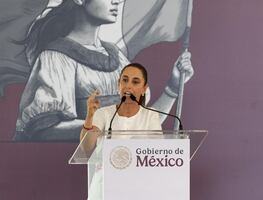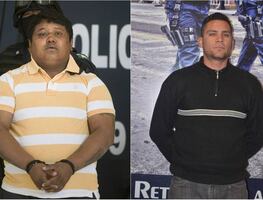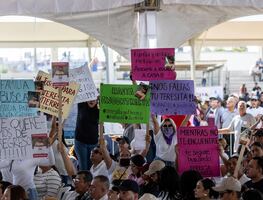Más Información

Osiel Cárdenas, exlíder del Cártel del Golfo, recibe auto de formal prisión; enfrentará juicio por homicidio

Jóvenes mexicanos pasan más de 2 mil horas al año en el teléfono; OCDE alerta sobre su impacto en la salud mental

Sergio Gutiérrez Luna destaca aprobación de 25 reformas en la 66 Legislatura; "Un logro histórico para la 4T", señala

Secretario de Agricultura reafirma defensa del maíz blanco; "Seguiremos apoyando la producción nacional no transgénica", afirma

¿Maíz transgénero? Rubén Rocha corrige desliz durante discurso en Sinaloa; destaca importancia del maíz blanco

Sheinbaum asegura apoyo total a Sinaloa para enfrentar violencia; "Nunca los vamos a dejar solos, aquí está la presidenta"
Daniel Torres, 26, is a writer. He has used methamphetamines for almost ten years. For some years he distributed drugs south of Mexico City, in areas such as Coyoacán and Coapa. He used and sold almost all kinds of drugs at parties or by cell phone seven days a week.
"I lived in Coyoacán, so there were a lot of parties where I could have fun and sell my products. Coapa, for example, is one of the areas of the capital city where more synthetic drugs are used," he added.
He tried marijuana when he was 16 and then moved on to synthetic drugs. “Meth made me feel as if I was in control of everything," he explained.
Daniel did not take any precautions to counter the effects of drugs, so he started losing weight and getting tired easily.
Over time, Daniel began fearing two things: police and competition. The first because of corruption prevailing in the system and the second because he knew dangerous dealers would not hesitate when defending their territory.
The methamphetamine sold by Daniel came from one of the 1,323 drug laboratories seized in Mexico between 2006 and August 2015.
Michoacán ranks first, with 460 dismantled drug labs, followed by Sinaloa, with 276 and Jalisco, with 181. Authorities have also dismantled 28 labs in Guerrero, 26 in Durango, 23 in Guanajuato, 22 in the State of Mexico and two in Mexico City.
Dr. Guadalupe Correa-Cabrera, associate professor and chair of the Government Department of the University of Texas at Brownsville professor, says that it is no coincidence that Michoacán, Sinaloa and Jalisco are the states with the largest number of laboratories, because “ephedrine and pseudoephedrine, the main components of methamphetamine, come from Asia, particularly China, by sea through ports such as Lázaro Cárdenas and Manzanillo.
In the late 90s methamphetamine production in Mexico was controlled by the Amezcua Contreras brothers, and then by the Valencias. Between 2005 and 2006, La Familia Michoacana started selling synthetic drugs in the region of Tierra Caliente and Michoacán.
In 2011 the Knights Templar cartel, a split-off cell of La Familia Michoacana, further increased production, and Michoacán became the leading producer of methamphetamine in the country and the state with more dismantled labs.
Until the end of August Mexico's Army had seized 3,336 kilos (7,354 pounds) of methamphetamine, compared to 17,565 kilos (38,724 pounds) in 2014, 11,220 kilos (24,735 pounds) in 2013, 30,626 kilos (67,518 pounds) in 2012 and 29,601 kilos (65,259 pounds) a year earlier.
Emilio Daniel Cunjama López, who has a masters degree in criminal policy from the National Institute of Criminal Sciences, said that the rise of drug labs and drug production in general in the country should be treated as an economic problem ruled by demand.
He explained that in Mexico, members of the same family sell and distribute drugs, while in the United States gangs monopolize sales.
Mexican cartels “are no longer vertical organizations; they operate as franchises that emerge and disappear quickly, as if they were an Oxxo," Cunjama added.
According to the 2014 Global Synthetic Drugs Assessment published by the United Nations Office on Drugs and Crime, Mexican methamphetamine has been found not only in North America, but also in Central and South America and even in Asia, where 78 Mexicans are in prison for crimes against health. In Malaysia three men from Sinaloa have been sentenced to death for drug trafficking.




